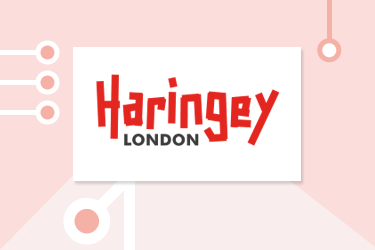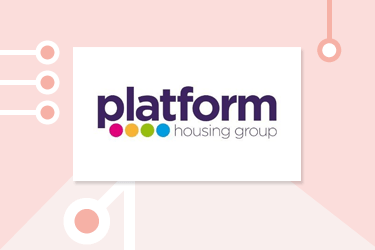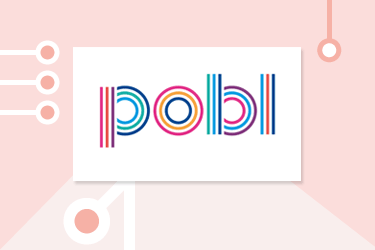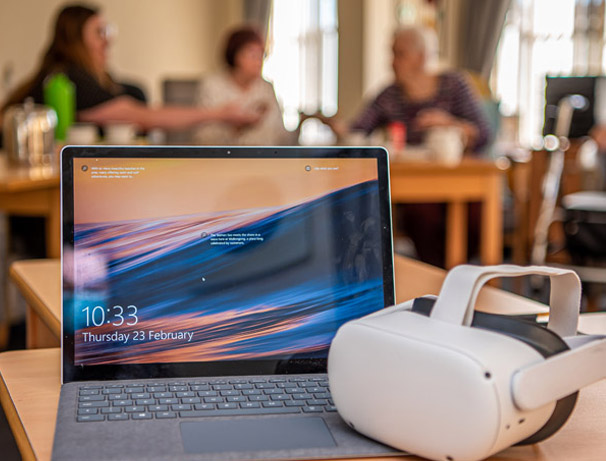Testbeds
The second phase of TAPPI, known as TAPPI2, aimed to test the principles set out in 2021 across six testbed sites. Through testing the original 10 principles at each site, TAPPI2 has enabled consideration of how technologies can be used effectively in housing and care settings to improve outcomes for people. Each testbed implemented their own technology pilot project, taking account of the TAPPI principles. This has provided a valuable opportunity to learn how the principles worked in practice and how they could best be adapted or implemented elsewhere.
The six testbed projects are briefly introduced below:
Bield Housing and Care
 As well as seeking to understand residents’ levels of digital literacy and address digital exclusion, Bield tested a range of technologies, working with tenants who are living independently to test devices aiming to improve wellbeing, and with tenants with identified support needs to test further technologies aiming to improve quality of life and enable people to live independently for as long as possible.
As well as seeking to understand residents’ levels of digital literacy and address digital exclusion, Bield tested a range of technologies, working with tenants who are living independently to test devices aiming to improve wellbeing, and with tenants with identified support needs to test further technologies aiming to improve quality of life and enable people to live independently for as long as possible.
London Borough of Haringey
 Technology was used across extra care settings, sheltered housing, bespoke housing, and people’s own homes across the London Borough of Haringey. The aim was to understand the needs of residents across these different housing models, to help people to age well, to help people remain independent, and to improve outcomes.
Technology was used across extra care settings, sheltered housing, bespoke housing, and people’s own homes across the London Borough of Haringey. The aim was to understand the needs of residents across these different housing models, to help people to age well, to help people remain independent, and to improve outcomes.
Platform Housing Group
 Technologies designed to respond to individuals’ specific needs were trialled in an independent living setting in Ledbury. Desired outcomes included improving digital connectivity, reducing isolation, and improving service engagement and satisfaction.
Technologies designed to respond to individuals’ specific needs were trialled in an independent living setting in Ledbury. Desired outcomes included improving digital connectivity, reducing isolation, and improving service engagement and satisfaction.
Pobl Group
 Pobl trialled a number of technologies in an extra care setting comprising 43 flats in Swansea. Residents were given choice over which technologies would best suit their needs.
Pobl trialled a number of technologies in an extra care setting comprising 43 flats in Swansea. Residents were given choice over which technologies would best suit their needs.
Southend Care
 Technologies (including various sensors) were trialled in supported living and extra care housing schemes, with the aim of preventing health problems, and using technology to tailor levels of face-to-face support to individuals’ needs to improve independence and wellbeing.
Technologies (including various sensors) were trialled in supported living and extra care housing schemes, with the aim of preventing health problems, and using technology to tailor levels of face-to-face support to individuals’ needs to improve independence and wellbeing.
Wiltshire Council
 Wiltshire trialled technologies in an extra care setting comprising 48 flats. An occupational therapist (opens new window) assessed the needs of residents, with the aim of ensuring the technologies chosen to respond to individuals’ needs. Intended outcomes of the project included reducing loneliness and preventing health issues.
Wiltshire trialled technologies in an extra care setting comprising 48 flats. An occupational therapist (opens new window) assessed the needs of residents, with the aim of ensuring the technologies chosen to respond to individuals’ needs. Intended outcomes of the project included reducing loneliness and preventing health issues.
Types of Technology
 How technologies were chosen varied across the testbeds. Some testbeds used occupational therapists, or TAPPI project managers, who spoke with residents about their needs and recommended particular technologies to meet their individual needs.
How technologies were chosen varied across the testbeds. Some testbeds used occupational therapists, or TAPPI project managers, who spoke with residents about their needs and recommended particular technologies to meet their individual needs.
Co-production occurred across most of the testbed sites in order to discuss which technologies people felt would be suitable for them and to involve residents in service design. An exception to this is Southend, where residents had less involvement in co-production.
The table below summarises the technologies which have been used across the TAPPI2 testbeds, highlighting some of the key advantages and disadvantages of different kinds of technologies.
Voice-controlled virtual assistants (such as the Amazon Alexa)
Trialled by: Haringey; Wiltshire
Easy to use; readily available on the commercial market; can connect to many household items that might otherwise be difficult to use for those with health problems, and therefore boosts independence; useful for providing reminders (such as to take medication); may feel like ‘company’.
May be set-up challenges; requires good connectivity; requires several other technologies (such as smart bulbs) to provide full benefits; can be difficult to use with speech issues.
Robotic vacuum cleaner
Trialled by: Haringey
Easy to use for people with mobility issues, it provides a sense of independence by enabling people to do household tasks.
Some need to be controlled through a smart phone, which can be challenging for those with limited digital skills.
GPS pendants (such as Oysta)
Trialled by: Haringey; Southend; Platform; Wiltshire
Boost confidence and independence by enabling people to go out for longer, or on their own; enhance a feeling of safety.
May send false alerts; they only work if they have a good, reliable service behind them.
Video doorbell
Trialled by: Haringey; Southend; Platform; Wiltshire
Can improve a sense of safety, prevent people from rushing to the door, and therefore reduce the risk of falls.
Requires good connectivity; demands extra fees for subscription to fully function; may require payment of a maintenance fee.
Beacons
Trialled by: Haringey; Platform
Can alert people with hearing impediments to things such as doorbells being rung, or fire alarms being triggered.
Only works if positioned in a highly visible location.
Remotely controlled appliances (including lights, electrical sockets, doors, and curtains)
Trialled by: Haringey; Platform; Wiltshire
Easy to use; boosts independence by enabling people to carry out everyday tasks themselves, which might otherwise be difficult.
There may be set-up and maintenance challenges.
Sensors, including movement, heat, humidity, and mattress sensors, etc.
Trialled by: Bield; Southend; Haringey
Can be useful for preventing health deterioration (e.g., by picking up on issues early); may provide peace of mind to tenants and families; data can be used to tailor care services to needs.
People may feel sensors are invading their privacy; some designs are less intrusive than others.
Falls detectors
Trialled by: Bield; Platform; Haringey; Wiltshire
Improve a sense of safety and independence; could reduce time waiting for help in the event of a fall by alerting staff more quickly.
May require good connectivity; some designs are more user-friendly than others; sensitivity levels may cause issues, and an initial trial and error period, as well as regular check-ins and reassurance for users, will likely be needed.
Tip kettles
Trialled by: Platform; Wiltshire
Easy to use; reduce the need for lifting; boost independence by enabling people to do some activities for themselves, which otherwise may be difficult.
Still needs someone to fill it, it is not big enough for people’s preferences.
Hydration cups
Trialled by: Wiltshire; Bield
Enables people to keep track of how much they are drinking and provides data to care providers to prevent dehydration.
Some people prefer a larger sized cup (any cup, smart or not, needs to be designed around the user); automatic data collection may need supplementing with manual entries if connectivity in the building is not seamless.
Tablets
Trialled by: Wiltshire; Platform; Haringey
Can be used to take advantage of several online opportunities, including entertainment, socialising, financial wellbeing, and others.
Difficult to use for people with low levels of digital skills; it requires ongoing training and support; requires good connectivity; and there are risks of online harm.
Pain checker (such as PainChek)
Trialled by: Southend
Useful for non-verbal people to communicate how they feel; reduces reliance on subjective assumptions.
Care platforms (such as Amba, Miicare, and Anthropos)
Trialled by: Southend, Bield, Platform
Provides an overview of data to inform care; useful for preventing health deterioration by enabling issues to be spotted early.
Need a designated staff to monitor the data; interoperability can present a challenge.
Magic tables and touch-screen notice boards
Trialled by: Platform; Pobl; Southend; Wiltshire
Can provide entertainment in a communal setting; can bring people together for socialisation; may make information more accessible.
Difficult for people with shaky hands; some users with low levels of digital literacy may view them as too complicated.
Wall-mounted call systems (such as Appello)
Trialled by: Wiltshire (provided by housing provider Housing 21); Platform
Enables communication between residents and staff within the building.
Complicated for some users; touch-screens can be difficult to use, especially for people with shaky hands.
Communication app
Trialled by: Haringey
Enables non-verbal people to communicate by typing; allows people to express themselves; can be set up with frequently used pre-set phrases.
Requires prompts to use the app; may depend on which carer is present.
 As well as seeking to understand residents’ levels of digital literacy and address digital exclusion, Bield tested a range of technologies, working with tenants who are living independently to test devices aiming to improve wellbeing, and with tenants with identified support needs to test further technologies aiming to improve quality of life and enable people to live independently for as long as possible.
As well as seeking to understand residents’ levels of digital literacy and address digital exclusion, Bield tested a range of technologies, working with tenants who are living independently to test devices aiming to improve wellbeing, and with tenants with identified support needs to test further technologies aiming to improve quality of life and enable people to live independently for as long as possible. Technology was used across extra care settings, sheltered housing, bespoke housing, and people’s own homes across the London Borough of Haringey. The aim was to understand the needs of residents across these different housing models, to help people to age well, to help people remain independent, and to improve outcomes.
Technology was used across extra care settings, sheltered housing, bespoke housing, and people’s own homes across the London Borough of Haringey. The aim was to understand the needs of residents across these different housing models, to help people to age well, to help people remain independent, and to improve outcomes. Technologies designed to respond to individuals’ specific needs were trialled in an independent living setting in Ledbury. Desired outcomes included improving digital connectivity, reducing isolation, and improving service engagement and satisfaction.
Technologies designed to respond to individuals’ specific needs were trialled in an independent living setting in Ledbury. Desired outcomes included improving digital connectivity, reducing isolation, and improving service engagement and satisfaction. Pobl trialled a number of technologies in an extra care setting comprising 43 flats in Swansea. Residents were given choice over which technologies would best suit their needs.
Pobl trialled a number of technologies in an extra care setting comprising 43 flats in Swansea. Residents were given choice over which technologies would best suit their needs. Technologies (including various sensors) were trialled in supported living and extra care housing schemes, with the aim of preventing health problems, and using technology to tailor levels of face-to-face support to individuals’ needs to improve independence and wellbeing.
Technologies (including various sensors) were trialled in supported living and extra care housing schemes, with the aim of preventing health problems, and using technology to tailor levels of face-to-face support to individuals’ needs to improve independence and wellbeing. Wiltshire trialled technologies in an extra care setting comprising 48 flats. An occupational therapist (opens new window) assessed the needs of residents, with the aim of ensuring the technologies chosen to respond to individuals’ needs. Intended outcomes of the project included reducing loneliness and preventing health issues.
Wiltshire trialled technologies in an extra care setting comprising 48 flats. An occupational therapist (opens new window) assessed the needs of residents, with the aim of ensuring the technologies chosen to respond to individuals’ needs. Intended outcomes of the project included reducing loneliness and preventing health issues. How technologies were chosen varied across the testbeds. Some testbeds used occupational therapists, or TAPPI project managers, who spoke with residents about their needs and recommended particular technologies to meet their individual needs.
How technologies were chosen varied across the testbeds. Some testbeds used occupational therapists, or TAPPI project managers, who spoke with residents about their needs and recommended particular technologies to meet their individual needs.